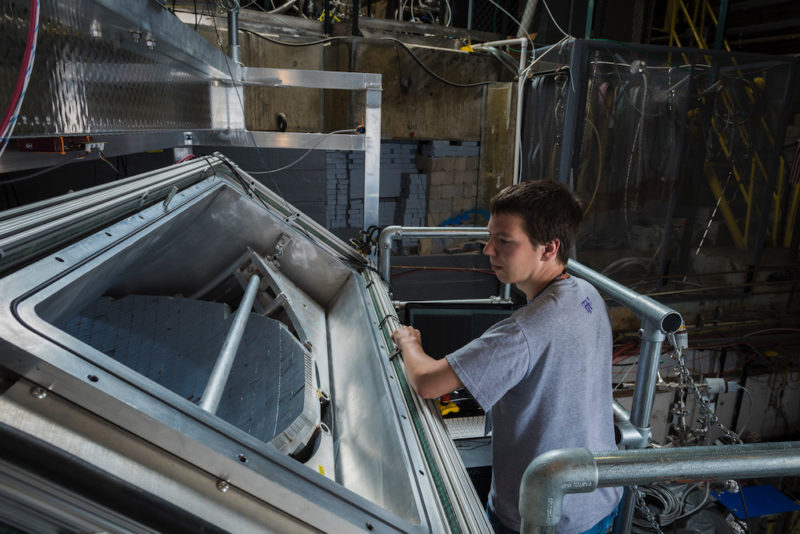COOKEVILLE – A group of Tennessee Tech students and their professor are part of a collaboration of institutions researching how the universe works by focusing on the lifetime of one of its smallest particles.
This group’s most recent research on the lifetime of a free neutron has been published in the journal Physical Review Letters. The opportunity to be a part of cutting-edge research is a hallmark of Tennessee Tech’s undergraduate experience.
“The idea physicists have about how the universe works is well tested and understood,” said Adam Holley, Associate Professor of Physics at Tennessee Tech. “Part of that understanding is that this amazing idea and theory of how the universe works is actually wrong. This experiment is trying to understand the flaws in this big theory that explains the universe called the Standard Model.”
Holley is a previous recipient of the National Science Foundation CAREER Award. He and his students were part of published research on this same subject in 2018.
“This is a new measurement that we’ve done of this neutron lifetime,” Holley said. “It’s the most precise that’s ever been accomplished before.”
Holley and his undergraduate students have done much of their research at Los Alamos National Laboratory, which Holley says is one of the few places in the world where this special neutron, called an ultra cold neutron, can be produced. A large part of their collaboration in the research is creating elements to fit the task at hand.
“There are lots of pieces that need to be conceived, designed, built and then taken out there and used,” said Holley. “These experiments are cutting edge. No one has done this before. When we decide that we need a problem solved there isn’t an example. We have to come up with ideas and do it ourselves.”
For example, tracking the neutrons required creation of a magnetic gravitational trap, which turned out to be a bathtub lined with refrigerator magnets deep enough so neutrons can’t hop out.
“We had to build a robotic arm,” Holley said. “Doing data analysis, writing code, doing simulations, building electronic circuits for detectors, all those things are not taught in standard classes. They are accessible to those who are willing to try and fail and keep trying. That’s what experimental physics is all about.”
The new research states that the neutron lives approximately 14.629 minutes, with an uncertainty of 0.005 minutes. There are other groups using a different method of research seeking the same answer to the neutron lifetime, in a race that has gone on for years.
Holley says he has no idea what the end result of the research will be. His joy is in the impact it will have on his students and their opportunity to take part in high quality research.
“It could be remarkable, or it could be just of academic interest,” Holley said. “The thing that really makes it neat is having these undergraduates working on this cutting-edge science and thinking that it might be the case that I will be retired before we discover some new physics and one of these students will be the one that writes the paper that describes how the measurement of the neutron lifetime results in some better understanding of the universe.”










